If you are exploring your DNA results and find a new sibling, or are wondering if you and your known siblings share the expected amount of DNA, you have come to the right place.
In this post, I'll tell you what you need to know about the number of shared DNA segments between siblings.
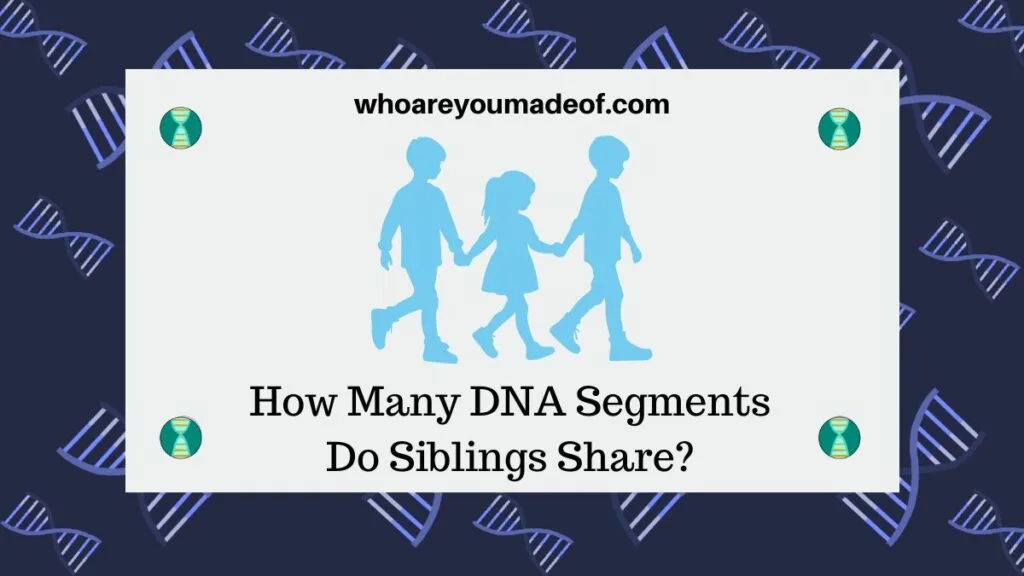
How many DNA segments should siblings share?
Even if you and your siblings share the expected total amount of DNA, you might be wondering if the total number of shared DNA segments makes a difference. Do more shared DNA segments mean that you are full siblings? Do less DNA segments shared mean that something went wrong with the test?
I totally get why this question is so important to my readers, since the relationship between siblings is one of the most important types of relationships that we humans participate in.
In the images below, you can see the shared DNA between two sets of full siblings:
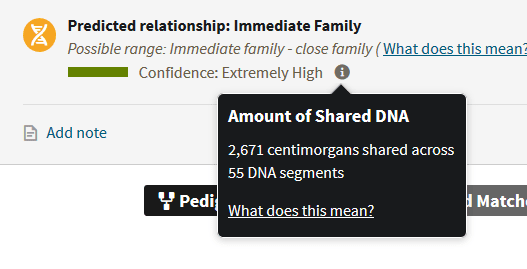
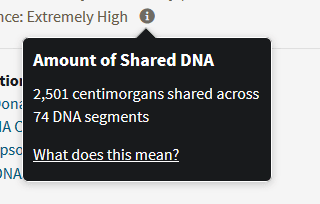
One set of full siblings shares 2671 cMs over 55 segments, and the other shares 2501 over 74 segments. Does this mean that we can say that full siblings should share between 55 and 75 DNA segments?
To find out, take a look at the images below of shared DNA between a person and two of their half-siblings, who happen to share a common mother and different father with the DNA tester:
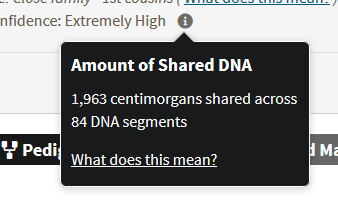
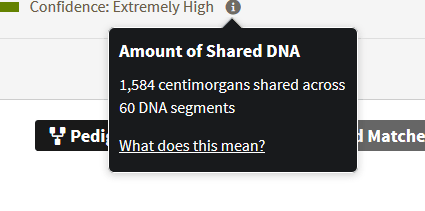
Hey, that's strange! One set of half-siblings shares 1963 cMs over 84 segments, and the other 1584 cMs over 60 segments. What is going on here?
The number of DNA segments shared between siblings doesn't matter
What you noticed in the images above is that there is a pretty wide range of total number of shared DNA segments between siblings. If you came to the conclusion that the number of shared segments between two siblings doesn't matter, then you would be right.
There are times when total number of DNA segments can give us a hint about the relationship, but this happens primarily with relatively distant relatives.
When we are discussing siblings, the only number that is important is the total number of shared DNA expressed as centimorgans (cMs).
If you are curious about why the number of DNA segments don't matter, keep reading. I'll explain a few more details on this topic that will help you get a better understanding of the DNA that you and your siblings share.
The number of segments that two siblings share is based on chance
We all have 22 numbered chromosomes, and have two copies of each chromosome. Our parents each have two copies of each chromosome, too - one from each of our grandparents.
We can't fit all of our parents' DNA into our genome, so DNA is "randomly selected" in a process called recombination. We end up with 50% of each of our parents DNA on their corresponding copy of all of our chromosomes.
To understand this better, take your father as an example, and imagine that we are talking about Chromosome 2. Your father has two copies of Chromosome 2, but he can't give them both to you, since you get the other one from your mother.
This means that his two copies of Chromosome 2 will go through the process of recombination and you end up with a brand-new, completely original version of Chromosome 2 that has some DNA from your grandmother and some DNA from your grandfather on it.
(In case you are curious, you might be interested to know that you end up sharing approximately 25% with each grandparent. Sometimes, you'll share a little more with one grandparent and less with the other.)
When your siblings are conceived, they inherit DNA in a similar fashion that has gone through a similar process.
As much as 50% of a full sibling's DNA will match yours in the form of shared DNA segments, but there is no rhyme or reason that dictates exactly how many shared segments you have, or really even exactly how long they are.
Since the process of recombination is pretty random, as far as scientists can tell, you will always share lots of DNA segments, but the length and number of those segments is left up to chance. The only thing we know for sure is that we tend to share longer segments with closer relatives, but there is no hard and fast rule about this.
The same is true for half-siblings, though half-siblings will only share half-identical regions as opposed to many fully-identical regions that full siblings will share.
Testing companies don't distinguish between segments that are on fully or half-identical regions and report them all as matching segments.
Not every DNA segment shared between siblings counts as a segment
A final detail to take into account when considering the number of shared DNA segments between siblings is that every company has a "threshold" that they use to determine whether a DNA segment qualifies as a match.
The reason that this is important is because many people share coincidentally identical segments known as "identical by state" segments. The smaller these segments are, the more likely it is that they are only identical because of chance.
Note: The opposite of an identical-by-state segment is an identical-by-descent segment, which means that the segment is identical because it was passed down from a common ancestor that you share with your match,
Every company has a slightly different threshold for what qualifies as a legitimate segment, and some companies report all identical segments and basically leave the decision-making to you, the user, to determine whether or not the segment should be counted in the total amount of shared DNA between you and another person.
This information is especially good to know if you are comparing matches across sites, since a segment that you see on one site might be too small to be counted on another site. For example, on Gedmatch, the threshold is generally set to only include segments that are longer than 7 cMs.
Siblings will primarily share pretty large segments, but there are occasionally smaller segments tucked in there that don't get counted.
Conclusion
I hope that this hoped helped you understand how and why the number of DNA segments that you share with your sibling has nothing to do with your relationship to them, and that the total amount of DNA is a much more useful detail.
If you have any questions about this topic, I would love to hear from you in the comments below.
Thanks for stopping by!


Dawn ehley
Tuesday 22nd of October 2024
I am trying to figure out if my aunt is actually my half sibling.( my grandfather molested my mother) she and I share 2084 cm and 45 segments. My other half sister who I was raised with share 1861 cm and 44 segments. I had my son do a dna and it’s saying she is his half aunt instead of great aunt with 957.6 and 26 shared segments. How do I tell if she’s my half sibling. My mother has passed.
Martina Yamauchi
Thursday 27th of July 2023
Hi I have a match that I thought was a nephew but after reading more into how dna works I think he is a hal-sibling, hope you can help me. His class 1796 across 26 dna segments. He shows up as close family-1st cousin. Thank you for your help.
Mercedes
Friday 28th of July 2023
Hi Martina, Thank you for your question, and I can understand that it is important to figure out how your match is related. Both a nephew and half-sibling could share 1796 cMs with you, so we can't be sure just based on the amount of DNA shared. One thing that you could look at is the other people who you share in common as matches (shared matches on Ancestry, DNA relatives in common on 23andMe). You should be able to narrow down on which side of the family the match is on. For example, a full nephew will be related to both of your parents, so they would have DNA matches from both sides of your family in common with you. A half-sibling would only share matches from one side of your family. If you have been in touch with your match, you might also be able to use their age compared with your age as a clue, too. Best of luck to you! Mercedes
Jesssy
Tuesday 27th of December 2022
Would 2396 cm be full siblings ? Shared segments 44 Shared dna 33.8%
Julie Scheppard
Monday 3rd of January 2022
My dad is matching a man at 1337cm across 29 segments with their longest segment at 133cm. My dad also matches this mans daughter at 1110cm across 26 segments with their longest segment at 134cm. It's tough to figure out if this man is my dads half brother or 1st cousin based on their numbers but based on my dads match to this mans daughter it seems more reasonable that they are half siblings. Therefore the daughter would be my dads half niece. I match this man at 776cm and his daughter at 723cm, which really makes this confusing for me. Paper trail confirms that my dads father and the matches father are brothers but...???
Charlene
Wednesday 24th of November 2021
I see this information about the DNA I share with a person not yet known by me:
28% shared DNA | 1,946 cM across 35 segments Unweighted shared DNA: 1,946 cM Longest segment: 197 cM
How likely is this person (male) to be a half sibling? If yes, can I determine from this if the half sibling is the child of my mother or father?
Thank you!